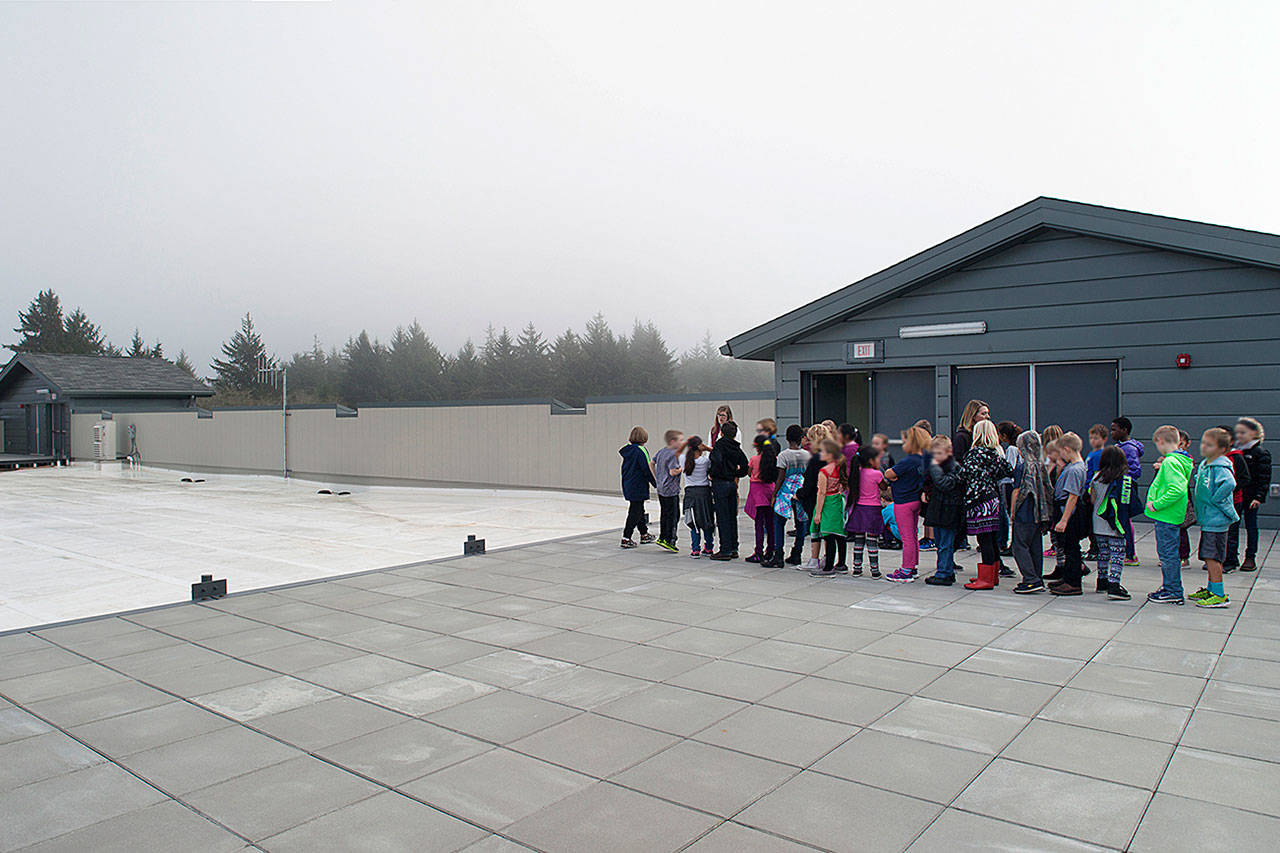The tsunami evacuation platform at Ocosta Elementary School will get a workout this Saturday when the community comes together for a tsunami evacuation drill at 11 a.m.
Ocosta School Superintendent Paula Akerlund says unlike last summer’s area-wide Cascadia Rising Drill, this one will focus directly on the Ocosta community, informing local residents what to expect in case of an earthquake or tsunami, how to prepare, and how to react when the signal sounds.
“This one is specifically for the community to come and learn how to use the facility, what to expect, when to evacuate,” she said.
Akerlund will address attendees at 11 a.m. with a few opening remarks, then turn the event over to Charles Wallace from Grays Harbor County Emergency Management.
“He will talk about what to expect, what’s going to happen, during an earthquake tsunami event,” said Akerlund. “He’ll provide information on when to evacuate, how long he anticipates it will be before we are rescued, things like that.”
The district’s facilities director will then talk to people about what will be available to them in the evacuation area.
“There will be food, water, first aid equipment, we have a ham radio (and) tools,” said Akerlund.
Wallace will then inform people how to prepare an emergency go-kit, and local PTA members will have backpacks for kids to pack their own to-go kit for themselves.
The event is only scheduled for two hours but Akerlund says anyone who attends will learn a great deal in that short amount of time. Lunch will also be provided, and the Westport Fire Department and emergency services will also be on hand to give out important emergency information.
The tsunami evacuation deck sits atop the school’s multipurpose room/gym/cafeteria wing and can hold up to 2,000 people. The building is engineered to withstand a magnitude 9 Cascadia megaquake and the tsunami it would likely generate. Construction on the school complex and tsunami platform began in late 2014 and the school was officially dedicated just last June.
Degenkolb Engineers was retained to design the structural system for the elementary school, according to an informational brochure created by Timothy J. Walsh with the Department of Natural Resources. The design of the platform was based on a computer model of a category 9 Cascadia earthquake and the tsunami it would generate. The platform sits 55 feet above sea level and is accessible by stair towers rising from all four corners of the gym. The stairs are accessible from outside the gym, giving anyone 24/7 access to the refuge.
The entire gym is pile supported with concrete shear walls and columns. The connections are designed such that they can give a little with the surging water of a tsunami and the impact of the debris such a wave would carry, lessening stress on the concrete and steel supports.



